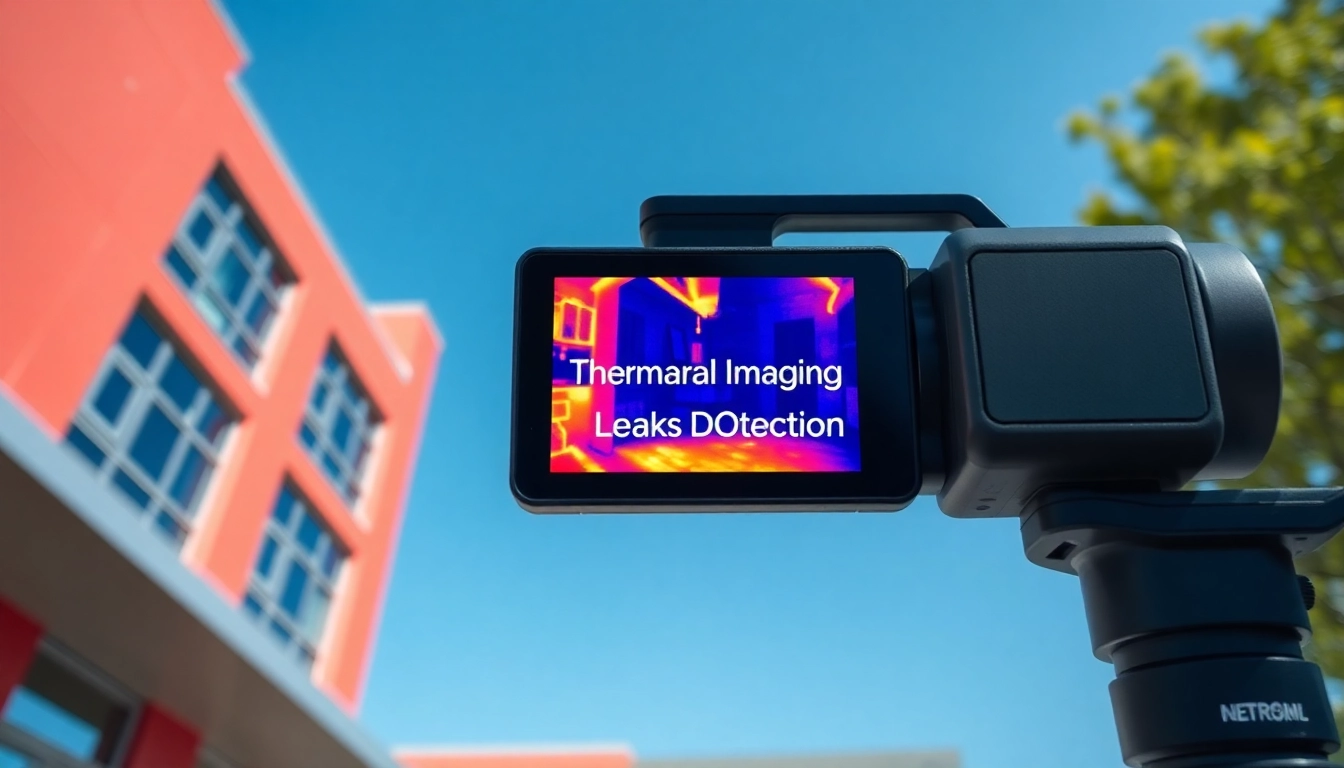Understanding Thermal Imaging Leak Detection
What is Thermal Imaging Leak Detection?
Thermal Imaging Leak Detection represents an advanced technique involving the use of infrared thermography to identify leaks in various environments, including residential, commercial, and industrial settings. This method leverages the principles of thermodynamics to reveal temperature variations on surfaces which may indicate the presence of water or moisture, thereby providing valuable diagnostic information to prevent damage and improve maintenance practices. By understanding and implementing Thermal Imaging Leak Detection, stakeholders can detect underlying issues before they escalate into significant problems.
How Does Thermal Imaging Work?
Thermal imaging works by capturing infrared radiation emitted from objects. All objects emit infrared radiation according to their temperature; warmer objects emit more infrared radiation than cooler ones. A thermal imaging camera records this radiation and creates a visual image based on temperature differences, allowing users to pinpoint areas of heat loss or moisture intrusion effectively.
During a thermal imaging inspection, the camera is aimed at the surfaces suspected of having leaks. The thermal sensor detects temperature variations, resulting in a color-coded thermal image, where different colors represent different temperature ranges. This process is quick and does not require physical alteration of the materials inspected, making it a non-invasive method highly valued in various fields.
Benefits of Thermal Imaging Leak Detection
The adoption of thermal imaging leak detection offers numerous benefits:
- Non-invasive Inspection: Unlike traditional detection methods that may require drilling or cutting, thermal imaging can detect leaks without damaging the structures.
- Speed: Thermal imaging is a rapid assessment tool that provides immediate results, enabling timely interventions.
- Cost-effective: Early detection of leaks leads to reduced damage and lower repair costs by addressing issues before they escalate.
- Comprehensive Analysis: Thermographic inspections can identify not only current leaks but also potential future issues based on thermal patterns.
Common Applications of Thermal Imaging Leak Detection
Residential Leak Detection
In residential settings, thermal imaging is invaluable for detecting leaks that may cause mold, structural damage, and energy loss. Homeowners can employ thermal imaging to identify hidden leaks in walls, ceilings, and floors without intrusive methods. Common sources of leaks identified in homes include plumbing systems, roofing, and windows, allowing for efficient targeting of repairs.
Commercial Leak Detection
For commercial properties, the implications of leaks can be significant, affecting the financial bottom line and tenant satisfaction. Thermal imaging helps property managers swiftly locate leaks in HVAC systems, roofs, and insulation, thereby preventing larger issues that could disrupt business operations or tenant comfort. Additionally, the ability to conduct maintenance without major disruptions is a considerable advantage.
Industrial Leak Detection
In industrial environments, leak detection is crucial not only for safety but also for compliance with environmental regulations. Thermal imaging can be used to monitor equipment, pipes, and storage tanks to ensure that hazardous materials are contained and that there are no leaks leading to costly outages or safety incidents. The technology also assists in the maintenance of systems by spotting overheating equipment, reducing downtime, and ensuring operational efficiency.
Steps to Implement Thermal Imaging Leak Detection
Choosing the Right Equipment
Selecting the appropriate thermal imaging camera is paramount to effective leak detection. Factors including resolution, sensitivity, and temperature range must be considered. Higher resolution cameras allow for better detail of detected thermal patterns, while cameras with higher thermal sensitivity can differentiate even slight temperature variations, providing a clearer picture of potential leaks.
Preparing for an Inspection
Preparation for a thermal imaging inspection involves several critical steps:
- Understanding the Environment: Familiarize yourself with the site layout and the common sources of leaks in the specific environment you are inspecting.
- Tools and Resources: Ensure that all necessary items, including the thermal camera, a data recorder, and report templates, are available and functioning correctly.
- Environmental Conditions: Ideally, inspections should occur when there is a noticeable temperature differential between surfaces, which enhances the visibility of leaks.
Conducting the Thermal Imaging Process
When conducting the inspection, it’s essential to follow a systematic approach:
- Initial Scan: Begin with a general scan of the area to identify obvious thermal anomalies.
- Targeted Inspection: Once potential leak areas are identified, conduct a more focused thermal analysis, capturing and saving images for later review.
- Data Analysis: After the inspection, analyze the captured thermal images to look for patterns that confirm the presence of leaks.
Challenges in Thermal Imaging Leak Detection
Understanding Limitations
While thermal imaging is a powerful tool, it is not without limitations. For instance, thermal imaging cannot detect moisture directly; it only shows temperature differences that may indicate moisture presence. Conditions such as ambient temperature, humidity, and surface materials can also affect the accuracy of readings. Understanding these limitations is key to interpreting results correctly.
Interpreting Thermal Images Accurately
Interpreting thermal images requires an understanding of the principles of heat transfer and potentially misleading thermal patterns. For example, a temperature difference may be caused by insulation defects rather than a leak, which necessitates further investigation. Training and experience play crucial roles in ensuring that technicians can accurately identify and assess the significance of thermal anomalies.
Common Mistakes to Avoid
Common mistakes in thermal imaging leak detection include:
- Ignoring Environmental Factors: Failing to consider external influences on temperature readings can lead to misinterpretation.
- Relying Solely on Technology: Overreliance on thermal images without combining them with other methods or inspections can yield incomplete assessments.
- Skipping Follow-up Inspections: After identifying a potential leak, failing to re-inspect the area can lead to unresolved issues.
Future Trends in Thermal Imaging Leak Detection
Technological Advancements
The future of thermal imaging leak detection is bright, characterized by the continuous evolution of technology. Emerging features such as enhanced resolution, built-in cloud connectivity, and integration with advanced data analytics promise to improve the accuracy and usability of thermal imaging systems. Additionally, the incorporation of artificial intelligence could enable predictive maintenance by analyzing historical data alongside real-time thermal data.
Integration with IoT Solutions
As the Internet of Things (IoT) continues to shape the technological landscape, thermal imaging is set to be integrated into IoT ecosystems. This integration will allow real-time monitoring of thermal anomalies, sending alerts to maintenance teams when issues arise. Such proactive management can significantly enhance safety and operational efficiency across industries.
The Growing Importance of Sustainability
In light of increasing environmental awareness, sustainable practices in leak detection are becoming increasingly important. Thermal imaging plays a significant role in minimizing energy loss, detecting leaks that contribute to resource wastage and ensuring that buildings operate efficiently. As sustainability continues to drive industry practices, the adoption of thermal imaging technologies will likely expand further.





Leave a Reply